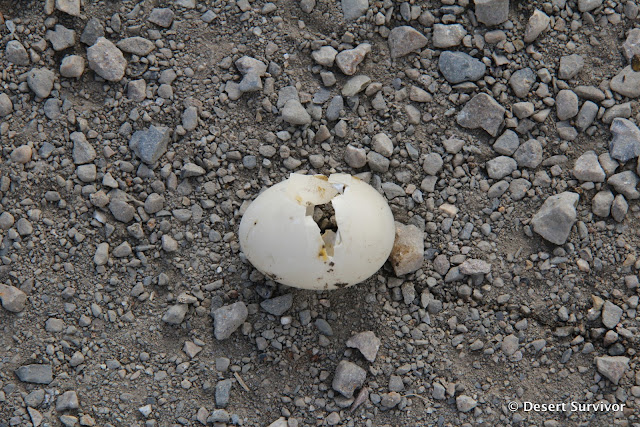We drove out to the beginning of the loop, where a picnic pavilion had been overtaken by cliff swallows. Picnicking here was no longer a good option, but bird watching and photography were fine.
The cliff swallows were in various stages of nest building.
After observing them for awhile, we got the bikes off the back of the van (last year we bought a bike rack, and it's been useful several times). Our plan was to bike the loop part of the auto tour, which we estimated to be about 9 miles (we couldn't find the actual distance anywhere, and it certainly felt longer, so perhaps when they say 12-mile auto tour that is just the gravel loop and not the part before it).
Right away we saw lots of birds. My husband and the kids kept riding while I stopped to take some photos.
The always-impressive American white pelicans.
Black-necked stilt
Cormorant--look at how low in the water this bird species is!
The road was really flat, which is why we thought we'd enjoy the bike ride. Desert Boy wasn't in the best of moods, so we took frequent snack breaks. Eventually the food pepped him up and he did great.
A tern--one of my favorite birds due to the amazingly long migrations they have.
I made frequent stops to photograph more birds--a black-necked stilt and an American avocet in the photo above. This is such the birder's paradise, and I felt that on bike I not only got to see them, but also hear and smell them better.
The yellow-headed blackbird is also common around parts of the ranch.
A few vehicles passed us on the one-way loop, but there was very little traffic.
A glossy-faced ibis. I love their beaks.
A few rays of sunshine peaked out from the clouds. This was also about the time that the slight breeze went away. I had been counting on the headwind to help us get back. It's dissipation meant we wouldn't have that advantage. Even more important, the lack of wind also meant that the insects started finding us and eating us. We are not used to insects (one of the advantages of living in the desert), so we didn't have any insect repellent.
Great blue heron
And many muskrats. Many, many muskrats. We were surprised how many we saw.
Great bike riding.
It reminded me slightly of Shark Valley down in the Everglades, with the flatness (although the background mountains sure were different!), amazing birds, and plenty of water. We teased Desert Boy to be on the lookout for alligators.
We came across a broken egg and wondered what had happened. Later we found a raven with another broken egg in its beak. Between the ravens and skunks, it could be a challenge to raise young, but the sheer number of birds help them to survive.
Another favorite--a snowy egret, with its yellow slippers (feet).
More black-necked stilts. We saw a lot of these!
We reached an overlook and gratefully stretched our legs. We still had a few miles left, where we got even more insect bites from mosquitoes and deer flies. They didn't itch much then, but for the next couple of weeks Desert Boy and I suffered. (My husband and Desert Girl seemed to be immune to the bites.)
We eventually made it back to the van, happy to escape the insects. It was getting late, so we headed to downtown Brigham City to find some food. The downtown has a large sign stretching across main street that says "Welcome to Brigham, Gateway to the World's Greatest Wild Bird Refuge." I had been reading Refuge by Terry Tempest Williams, which had made me appreciate the bird refuge more. She also had some interesting information in the book about Brigham City, which started off as a communal living effort.
After dinner, it was time for a late night swim at our hotel pool. The kids improve so much each time we get to a pool. I was a little pool rat when I was a kid, so I'm hoping they can learn how to swim well.
So, in closing, I'd recommend a trip to the Bear River Migratory Bird Refuge if you like birds and getting away from the city. The bike loop is great IF you have insect repellent. Otherwise, it might be better to do it in a vehicle! The kids liked trying to find different types of birds (by colors, activities, sizes). They also liked seeing the skunk, muskrats, and enormous (gross) carp by some of the water structures. Some of them weighed more than the kids. All in all, it was quite enjoyable.



































































